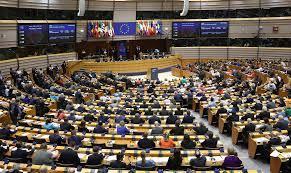
https://www.rescue.org/sites/default/files/2024-04/URF%20adoption%20-%20...
INTRO
10 April 2024 – While the adoption of the Pact on Migration and Asylum today is likely to lead to a detrimental degradation of people’s access to protection in Europe, the new Union Resettlement Framework (URF) adopted alongside the Pact offers a glimmer of hope. It has the potential to bring about a more coordinated, predictable and protection-centred approach to EU resettlement, especially for refugees in vulnerable situations. Safe routes for refugees to reach Europe are not an optional 'nice to have' - they must be an intrinsic part of a well-functioning asylum system, alongside and in addition to the right to claim territorial asylum. Refugee resettlement is one tried and tested safe route, which is ready to be significantly scaled up.
The Union Resettlement Framework offers a golden opportunity to make this happen. With refugee resettlement needs at an all-time high, the EU must leverage this moment to bring more people to safety, in line with commitments made under the Global Compact on Refugees. In 2024, over 130 million people are estimated to have been forcibly displaced globally, while UNHCR estimates that over 2.4 million are in need of resettlement. Yet, while EU leaders often speak of the importance of increasing safe routes to protection, many resettlement programmes have been scaled down, suspended, or indefinitely put on pause in recent years. Indeed, only 14 EU Member States have pledged to participate in resettlement programmes in 2024 and 2025 - which is a decrease compared to the 17 who had made such commitments for 2023. In December, EU states pledged to resettle 15,000 refugees in 2024, down from 30,000 pledges made for 2020 despite resettlement needs soaring by 40% in the last four years.
The resettlement target is clearly far too low, accounting for less than 1% of the people identified as being in need of resettlement by the UN refugee agency UNHCR. In addition, Member States have pledged to welcome 15,000 people via humanitarian admission programmes, which allow for the urgent evacuation of vulnerable people following a humanitarian emergency.
Continue reading on the link at the beginning









